Applications
|
 |
Advanced Transportation Management System: The Advanced Transportation Management System from Trafficware, a Cubic Transportation Systems company, helps smart cities address the challenges of transportation management. Features include an alarms dashboard, a map view, and a streaming traffic information service.
|
 |
AI.SEE: AI.SEE, an automated quality assurance system, uses AI-powered image recognition and deep learning algorithms to find even the smallest defects on heterogeneous or reflective surfaces, which are often overlooked by human inspectors. This app is available in German and English.
|
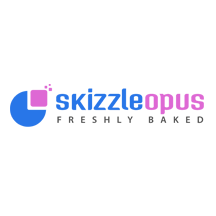 |
Appointment and Customer Management: SkizzleOpus is a cloud-based appointment-scheduling solution for a wide variety of businesses. Also, as a source of centralized information on space utilization, SkizzleOpus helps track the flow of people to manage social distancing.
|
 |
Augmental: Making education more personalized: Augmental, an adaptive learning platform, empowers teachers by providing them with real-time insights to better support their students. Augmental, which customizes course material to each student’s needs, includes a virtual classroom tool and a reporting and analytics module.
|
 |
BIA Reporting Hub: Bridge your business intelligence platforms with BIA Reporting, which allows you to centralize reports and dashboards. BIA Reporting includes free updates and unlimited support from BI4ALL.
|
 |
Bidvest ALICE: SaaS for Governance and Assurance: Bidvest’s ALICE platform translates business logic and rules into repeatable algorithms and augments them with cognitive services, aiding governance, risk, and compliance efforts.
|
 |
BLE Authentication Module: Bluetooth Low Energy Authentication Module (BLEAM) uses Bluetooth beacons to determine the precise location of a person or object and enable touchless authentication services at various businesses, such as electric vehicle charging points.
|
 |
Bottomline Healthcare eCapture and PreCapture: Bottomline Technologies’ eCapture and PreCapture solutions make it easy to move away from paper forms, centrally manage patient forms, and capture signatures, photos, and data on almost any device anywhere.
|
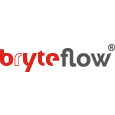 |
BryteFlow Ingest Enterprise Edition: BryteFlow Ingest automatically transforms source data structures and schemas to build identical data sets in Microsoft Azure SQL Database and Azure Synapse Analytics. Log-based tracking enables continuous detection and transfer of incremental changes.
|
 |
Casper365 Enterprise: Casper365 Enterprise is ideal for companies looking to allow their users to create new SharePoint sites via a governed and managed self-service portal. Casper365 automates complex SharePoint deployments quickly and easily.
|
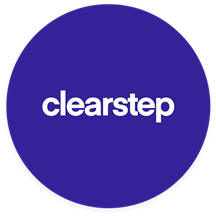 |
Clearstep: Clearstep, a chatbot triage tool, routes patients to the right place of care depending on their symptoms. Patients can search based on their symptoms, get matched to the right in-network provider, understand the cost of care, and book care online.
|
 |
CloudBrain: Click2Cloud’s CloudBrain is a multi-cloud management platform that helps users control cloud spending by optimizing the utilization patterns of their cloud services.
|
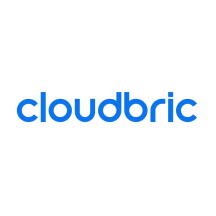 |
Cloudbric Smart Web Application Protection: Cloudbric’s fully managed Smart Web Application Protection (SWAP) offers threat monitoring, automated configuration, managed maintenance, and continual threat response. Reduce security costs and achieve peace of mind with SWAP.
|
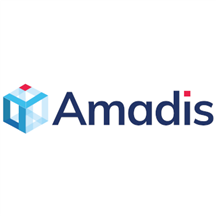 |
CloudCADI: CloudCADI, cloud consumption and optimization software from Amadis Technologies, utilizes machine learning models to predict expenses. This helps organizations, IT teams, and others accelerate and manage their transformation.
|
 |
Commerble EC PaaS: Commerble is a customizable e-commerce platform that can maintain a high level of performance even under the pressure of 2,000 simultaneous orders per minute. This app is available only in Japanese.
|
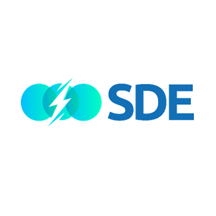 |
COVID-19 Scientific Data Engine (SDE): The Scientific Data Engine (SDE) from SciMar ONE is a drug development platform that expedites the delivery of safe and effective drugs, vaccines, and diagnostics. The SDE uses COVID-19 clinical data to streamline and de-risk drug development efforts.
|
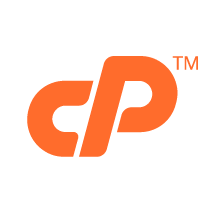 |
cPanel & WHM for Azure: cPanel & WHM is a suite of tools that gives website owners and server administrators the ability to automate web hosting tasks via a simple graphical user interface. Migrate new customers, launch databases, secure your system, and customize and brand your service.
|
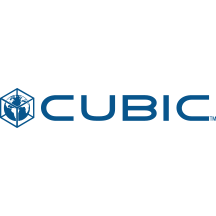 |
Cubic Interactive: Cubic Interactive enables transit agencies to build custom loyalty and incentive programs in their mobile transit apps. Agencies can encourage desired travel behavior by awarding travelers loyalty points to offset transportation costs.
|
 |
CyberPion’s Ecosystem Security: CyberPion enables enterprises to identify security issues throughout their ecosystem and to control and manage vulnerable connection points to prevent exploitation.
|
 |
DataWeave Brand Analytics: With human-aided machine intelligence, DataWeave gathers external competitive information online, organizes it, and delivers it in a structured, easily consumable form. This helps businesses protect brand equity and enhance their e-commerce catalogs.
|
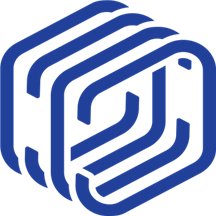 |
dcirrus_b2bfileshare: This file-sharing solution from DCirrus lets business-to-business customers share confidential files using secured dynamic passwords. Customers can track their files and disconnect shared links at their convenience.
|
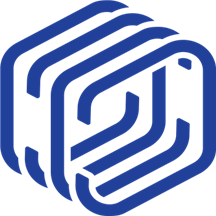 |
dcirrus_vdr: DCirrus VDR is a secured virtual data room solution for due diligence and audits. Features include granular controls, smart tagging, indexing of documents, and watermarking with user details to avoid data theft.
|
 |
deFacto Power Planning: deFacto Power Planning, a corporate performance management solution, enables enterprise-quality budgeting, forecasting, analysis, and more. Designed for Microsoft customers, its architecture is synchronized with Azure, Dynamics 365, and data integration tools.
|
 |
dh Model Lab: dunnhumby’s machine learning solution, Model Lab, lets data scientists in retail automate many repetitive tasks, giving them more time to model and deliver customer insights to drive profitability and customer loyalty.
|
 |
Direct Routing for Teams with AT&T: This solution utilizes AT&T IP Flexible Reach to allow you to make and receive calls outside of your company’s Microsoft Teams service. Empower your workforce to collaborate whenever and wherever with SIP trunking, SBC-as-a-Service, and professional services from AT&T.
|
 |
E-book borrowing program: Offer your users e-books through this app from Jiju International Co. Ltd. Users can choose a book, download it to Microsoft OneDrive, and sync it to their personal folders. This app is available in Chinese.
|
 |
ERP SCHOOLS SISGA ACADEMIC: This virtual classroom system targeting the Latin American market includes forums, calendars, an online payment gateway, integration with the Schoology learning management system, and more. This app is available only in Spanish.
|
 |
Flarie Studio – Create your own branded games: Flarie Studio from Flarie AB allows organizations to take advantage of the fast-growing gaming market by branding games for social media campaigns and more. Users choose from premade games, upload design assets, adjust game settings, and launch a branded experience.
|
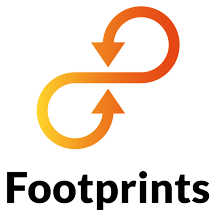 |
Footprints for Retail: Footprints for Retail is an advanced AI marketing platform that anticipates shopper behavior. With its predictive models and campaign automation, marketing teams can increase their effectiveness while decreasing spending.
|
 |
Fortanix Confidential Computing Manager on Azure: The Fortanix Confidential Computing Manager enables applications to run in confidential computing environments. It orchestrates critical security policies, verifies the integrity of environments, and manages the enclave application lifecycle.
|
 |
G Suite to Office 365: Cloudiway’s platform helps organizations migrate from G Suite to Office 365. All types of migration paths are supported. For best results, Cloudiway recommends using its file migration tool alongside its site migration tool.
|
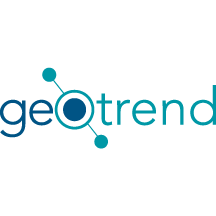 |
Geotrend Market Intelligence: Geotrend aids market intelligence teams by carrying out cross-disciplinary research on all types of markets. The AI-based SaaS solution reduces research time, giving teams more time for analysis. This app is available in English and French.
|
 |
Granulate Real Time Continuous Optimization: Granulate provides continuous performance optimization, enabling organizations to handle compute workloads with fewer servers and allowing DevOps and infrastructure managers to optimize costs.
|
 |
Haldor Planning: Haldor Planning allows teachers to plan lessons and build a curriculum in Microsoft Teams. This gives teachers and students a clear overview of plans, assignments, and assessments, all in one tab in Teams. |
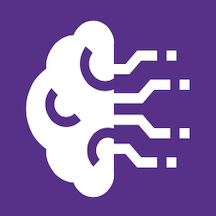 |
Hub Cittamobi: Hub Cittamobi centralizes control of urban transportation operations, integrating cameras, turnstiles, sensors, audio and video systems, Wi-Fi, and more. This app is available in Brazilian Portuguese.
|
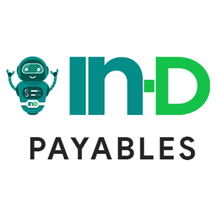 |
IN-D Payables – Invoice Processing: IN-D Payables, an AI-based engine for accounts payable operations, processes invoices and extracts the useful details, like invoice number, PO number, and vendor name. It can send the relevant fields to accounting software in a matter of seconds.
|
 |
Inpowa: Inpowa is an industry-agnostic employee engagement platform that reduces staff turnover, increases productivity, improves morale, and incentivizes workers through rewards based on numerous key performance indicators. Inpowa integrates with Microsoft Teams.
|
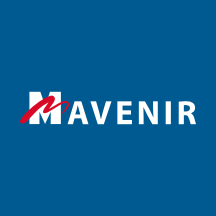 |
Mavenir Business Messaging Solution: Mavenir Business Messaging Solution provides a Messaging-as-a-Platform layer and value-added tools, apps, and services to enable brands, mobile network operators, and aggregators to build conversational customer experiences for mobile consumers.
|
 |
NeoStencil – Making Institutes Live/Online: Through its secure platform hosted on cloud servers, NeoStencil brings the experience of India’s top education institutes and teachers online to help students. Institutes can host live classes and receive support from the NeoStencil team.
|
 |
On Demand License Management: Gain complete visibility into Office 365 and Microsoft Azure Active Directory licenses and utilization with Quest On Demand License Management. Discover who is or isn’t using provided licenses and determine what’s provisioned in your tenants.
|
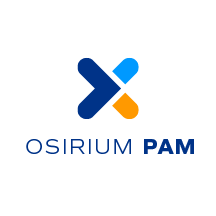 |
Osirium PAM: This privileged access and infrastructure management solution protects critical assets, ensuring every action is accountable, visible, and auditable. Osirium PAM is one component of Osirium’s Privileged Access Security solution.
|
 |
PackID – Temperature and humidity monitoring: PackID offers temperature and humidity monitoring to prevent loss in the distribution chain of perishable products. The solution includes radio-frequency sensors that send information to the cloud and can be accessed through any device. This app is available only in Portuguese.
|
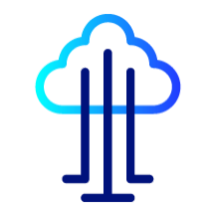 |
pecano-erp-billing-electronic-taps: PECANO’s enterprise resource planning software includes an electronic billing service provided to Peruvian companies. This app is available only in Spanish.
|
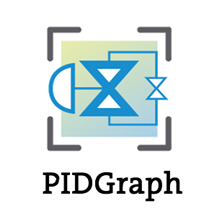 |
PIDGraph – Digitalization of brownfield documents: PIDGraph uses artificial intelligence to convert analogue piping and instrument diagrams into a digital format. Increase your process plant’s efficiency with the help of a digital twin of your analog system models.
|
 |
Qourt from Law Qube: Part of Law Qube’s suite of judicial and law enforcement management products, Qourt helps courts of all levels manage cases as they progress from initiation through disposition.
|
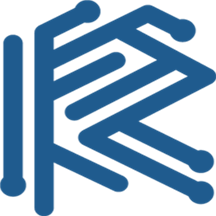 |
Rigado Cascade: The Cascade IoT Gateway is an element of the Rigado Edge-as-a-Service solution, and it offers an edge network for large-scale, low-power wireless deployments. Rigado makes capturing physical and environmental data easy by combining edge hardware with a secure connectivity platform and a managed cloud service.
|
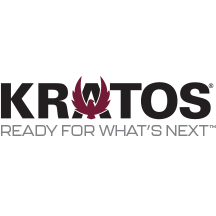 |
SaaS Offer for EO/Remote Sensing Service Chain: This package from Kratos supports earth observation and remote sensing missions. It includes the quantumRX wideband receiver (qRX), the quantumDRA stream processor/recorder (qDRA), and a one-week implementation support service.
|
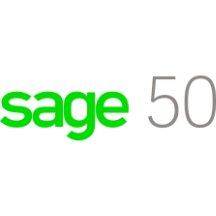 |
Sage 50 Cloud Order & Accounting: Are you looking for a reliable cloud solution for order processing, inventory management, and financial accounting? Sage 50 delivers, and it brings with it the flexibility to run on any device. This app is available only in German.
|
 |
Scissors Staffing Management: Speed up your temp staffing with Scissors, a white-label solution available as a web or mobile app. Scissors can help you manage timekeeping, hiring, incident reporting, and more. Turn on additional integrations with major invoicing and payroll software to save even more time.
|
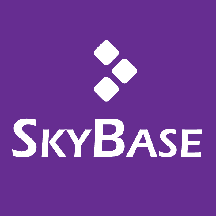 |
SkyBase for Oracle Database on Azure: SkyBase Launcher lets you create an Oracle database server in your Microsoft Azure account with just a few clicks. The deployment process is fully automated and repeatable using an infrastructure-as-code approach.
|
 |
Stimulus Relationship Intelligence Platform (SRIP): Through real-time data analysis, Stimulus Relationship Intelligence Platform (SRIP) helps companies make better purchasing decisions, identify business opportunities, and avoid disruptions across the supply chain.
|
 |
SurPaaS Operato: Operato enables you to group your cloud resources by application and perform day-to-day optimization and modernization with its management tools.
|
 |
SwiftGo Smart Cart and Smart Basket: SwiftGo allows brick-and-mortar retail stores to shrink checkout lines and supply customers with personalized marketing as they shop. SwiftGo retrofits existing carts and baskets, enabling a swift, frictionless shopping experience.
|
 |
TalentTurf: Move from traditional performance reviews to insights-led performance conversations with TalentTurf. TalentTurf features embedded analytics, an easy-to-use interface, integration with leading ERP systems, and multi-device versatility.
|
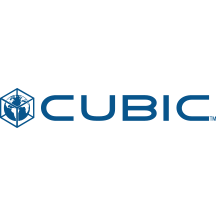 |
Transport Management Platform: Cubic’s Transport Management Platform facilitates coordination between transportation networks. Agency operators can work together to manage incidents and congestion in urban, interurban, and freeway environments.
|
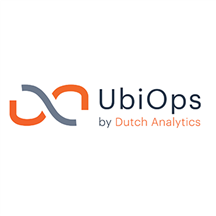 |
UbiOps: UbiOps is a hosting layer for data science and AI code that lets teams keep track of their algorithms, functions, and scripts in one place. UbiOps also quickly turns algorithms into scalable apps without requiring knowledge of microservices or DevOps practices.
|
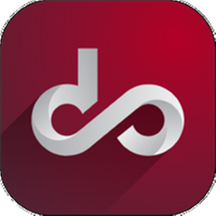 |
uqudo Digital Onboarding and KYC: The uqudo platform is used for onboarding, sharing, and authentication. Onboarding covers user registration, ID validation, and background screening. Sharing covers know-your-customer details. Authentication uses biometrics to verify the identity of users already onboarded.
|
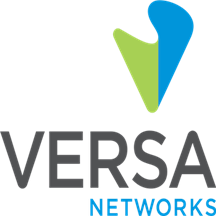 |
Versa Operating System (VOS): Connect and secure your Microsoft Azure workloads with the Versa Operating System (VOS), which provides software-defined routing, security, and a wide-area network. VOS is managed and controlled by Versa Director.
|
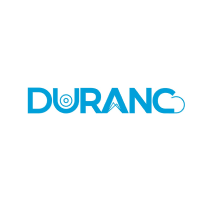 |
Video Surveillance as a Service: Intended for small and medium-sized enterprises, Duranc’s scalable video surveillance solution brings together artificial intelligence algorithms and cameras for use in loss prevention and risk mitigation.
|
 |
Wallet Station: Wallet Station enables QR code payments and one-stop services from merchant apps to management systems. Additional functionality, such as coupons, can be added. This app is available only in Japanese.
|
![Zultys MXVirtual Enterprise Phone System [jpeg].jpg Zultys MXVirtual Enterprise Phone System [jpeg].jpg](https://www.drware.com/wp-content/uploads/2020/12/large-341) |
Zultys MXVirtual Enterprise Phone System: Zultys MXvirtual is a unified communications solution and IP phone system virtual appliance. Innovative, reliable, and scalable, it integrates voice, video, data, and mobility services to optimize collaboration and communications for businesses of all sizes. |
Consulting services
|
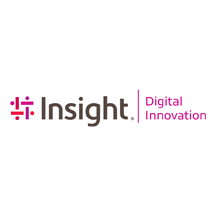 |
Analytics with Azure Synapse: 2wk Proof of Concept: Insight’s team of specialists will align the power of data analytics with your business opportunities, then shape one to three use cases for a proof of concept. Stakeholders will receive code, artifacts, and one or more demo-ready AI solutions.
|
 |
Application Modernization: Future-proof your applications by moving them to Microsoft Azure. Stratum’s cloud experts will determine which apps are ready to be migrated to Azure and which will need modernization. Stratum’s goal is to modernize with few to no code changes to the apps.
|
 |
Application Modernization: 4 weeks assessment: In this assessment, Birlasoft will examine your enterprise IT systems and monolithic applications, then provide a strategic roadmap for the easy adoption of microservices and Microsoft Azure.
|
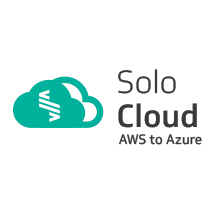 |
AWS to AZURE – Cloud Migration: 2-Wk Imp: Solo Network Brasil S/A will migrate your resources from Amazon Web Services (AWS) to Microsoft Azure. A roadmap for migration will ensure the process is structured and optimized.
|
 |
Azure AD Setup 10-Week Implementation: In this engagement, Wipro will provide consultation and setup for Microsoft Azure Active Directory. Wipro will start with an assessment to determine your organization’s identity posture, then develop a gap analysis and a transformation roadmap.
|
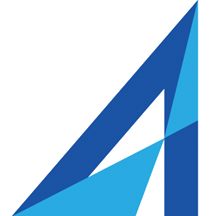 |
Azure App MVP Development: 10 Week Implementation: Let Ascendle Technology supply your business with a custom software development team to build a minimum viable product. This will entail four weeks of strategy and three two-week production sprints. You’ll receive a demonstration every two weeks.
|
 |
Azure Arc Management Assessment: 5 Days: Fujitsu Services United Kingdom will conduct a workshop, a proof of concept with Microsoft Azure Arc, an implementation of a dashboard and workbook in Azure, and a plan to roll out Azure Arc for your hybrid and multi-cloud estate.
|
 |
Azure Cloud Migration Assessment: 3-Day Assessment: After reviewing your company’s goals and analyzing its infrastructure, Chorus will create a cloud readiness report and discuss the findings and recommendations with you. Chorus assessments help companies plan an optimal migration to Microsoft Azure.
|
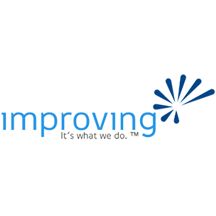 |
Azure DevOps for Data – 2 Day workshop: Are your data developers left in the dark about the power of DevOps? This workshop from Improving will demonstrate how to automate data deployments via Microsoft Azure DevOps and a CI/CD process. Improving will build a foundation for DevOps in your data world.
|
 |
Azure Logic Apps Bot: 1 Day Workshop: Catalyst Technology Group’s free workshop will introduce companies to Microsoft Azure Logic Apps and Microsoft Power Automate, then set up a configuration to return results to the Otto.bot chatbot.
|
 |
Azure Networking Workshop (2 day KickOff): Available only in German, this workshop from braincon GmbH will go over the basics of Microsoft Azure network infrastructure, security concepts, landing zones, and resource locations. The workshop is limited to four customer participants.
|
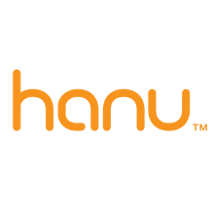 |
Azure Security/Compliance Audit (3-Day Assessment): This free assessment from Hanu will examine your Microsoft Azure security posture. Hanu will perform a compliance audit, conduct an application vulnerabilities check, and look for infrastructure configuration gaps.
|
 |
Azure Sentinel SIEM Managed Service: ITC Secure’s managed service provides a cost-effective approach to event collection and collation, threat detection, incident investigation, and rapid response using Microsoft Azure Sentinel. |
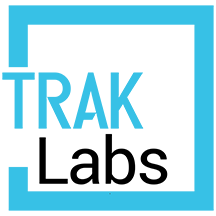 |
Blockchain Engineer Course and Lab: Get three months of instruction and hands-on lab assignments in this blockchain fundamentals course from Trak Labs. The course will include 11 modules and 20 practical projects on Ethereum, Hyperledger, and Tezos. |
 |
Citizen Services Conversational AI: 4-Hr Workshop: Discover how conversational AI powered by Microsoft can alleviate demand on call centers. VERSA’s workshop will examine this and how conversational AI can create more meaningful interactions between citizens and government entities.
|
 |
Custom software development: 1-day Assessment: In this assessment, Comminus will determine your project goals, estimate a budget, and provide a technical proposal that reflects the associated costs of running your solution on Microsoft Azure.
|
 |
Cyber Defense Analysis: CUATROi’s Cyber Defense Analysis service, available in English and Spanish, assesses organizations’ cybersecurity status. CUATROi analyzes Microsoft 365 solutions, IaaS and PaaS services, spear phishing risks, and more. |
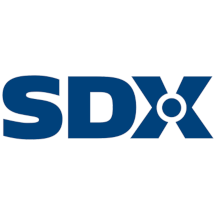 |
Data Analytics on Azure: 2-h Briefing: This briefing from SDX is aimed at customers interested in using Microsoft Azure for data analytics in hybrid or cloud-only settings. SDX will cover selected use cases and conclude with recommendations and best practices.
|
 |
Explore Innovation Workshop: 10 day engagement: Prodware’s workshop will focus on your organization’s strategic needs and how technology and Microsoft Azure can bring about transformation in an agile manner. This offer includes an innovation gap analysis and an action plan.
|
 |
Go to Cloud – 5 Day Workshop: Intended for technical and business stakeholders, this workshop from GFI will allow your organization to understand the possibilities of cloud migration. With GFI’s assistance, you’ll be able to create a roadmap for migrating to Microsoft Azure.
|
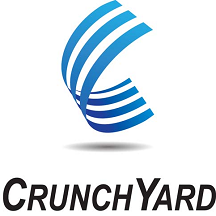 |
HPC Consulting- Implementation: 3 Weeks: CrunchYard will assess your high-performance computing (HPC) needs and propose an architecture to implement on Microsoft Azure. Examples of solutions: parallel file systems for financial services or HPC clusters for exploration geophysics.
|
 |
Insight Discovery and Accelerator: 1 Hr Assessment: Enlighten Designs will address how to implement the Insights and Discovery Accelerator in your Microsoft Azure tenancy. The Insights and Discovery Accelerator uses Azure Cognitive Search and more to analyze page layouts and to extract text, images, and key entities for indexing.
|
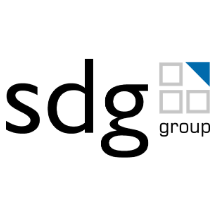 |
IoT with Azure: 1-day workshop: Available only in German, this workshop from SDG Group will discuss implementing IoT scenarios with Microsoft Azure IoT services, then help you develop a complete use case, from data acquisition and processing to infrastructure-as-code deployment.
|
 |
Modern Data Warehouse: 10-Day Assessment: Predica will analyze your on-premises or hybrid cloud architecture, then collaborate with you on a plan that will allow you to implement a modern data warehouse and take advantage of the possibilities of Microsoft Azure.
|
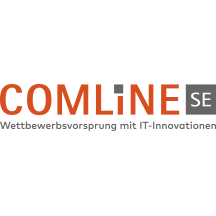 |
One Day Azure Kubernetes Consulting Workshop: In this workshop, COMLiNE SE will provide an overview of container technologies and how to manage and orchestrate your containers with Microsoft Azure Kubernetes Service and other Azure services.
|
 |
Road to Success Teams: Together with employees from your organization, experts from Ask Roger! will strategize the migration of your traditional phone system or Skype system to Microsoft Teams. This offer is available only in Dutch.
|
 |
SAP on Azure: 8-Wk Proof of Concept: SE16N’s proof-of-concept offer lets customers choose a pilot project from among several scenarios, such as migrating to Microsoft Azure, building an SAP system landscape on Azure, or building an SAP disaster recovery solution on Azure.
|
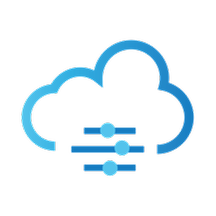 |
SEGA Cloud: SEGA Cloud, a managed service from SEGA S.A., is designed to optimize your cloud costs and identify possible security risks by monitoring your Microsoft Azure services.
|
 |
VDICE-Virtual Desktop Intertec Cloud Experience: Intertec Systems LLC’s pay-as-you-go managed desktop service, built on Windows Virtual Desktop and third-party add-ons, reduces the hassle of managing end-user computing to just hardware support and access to the internet.
|
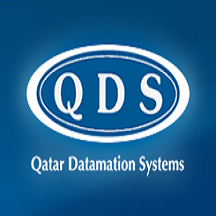 |
Windows Virtual Desktop: 2 weeks Implementation: In this offer, QDS will implement Windows Virtual Desktop so you can easily transition to a virtual work experience. Customers can save money and improve flexibility with Windows Virtual Desktop.
|


Recent Comments